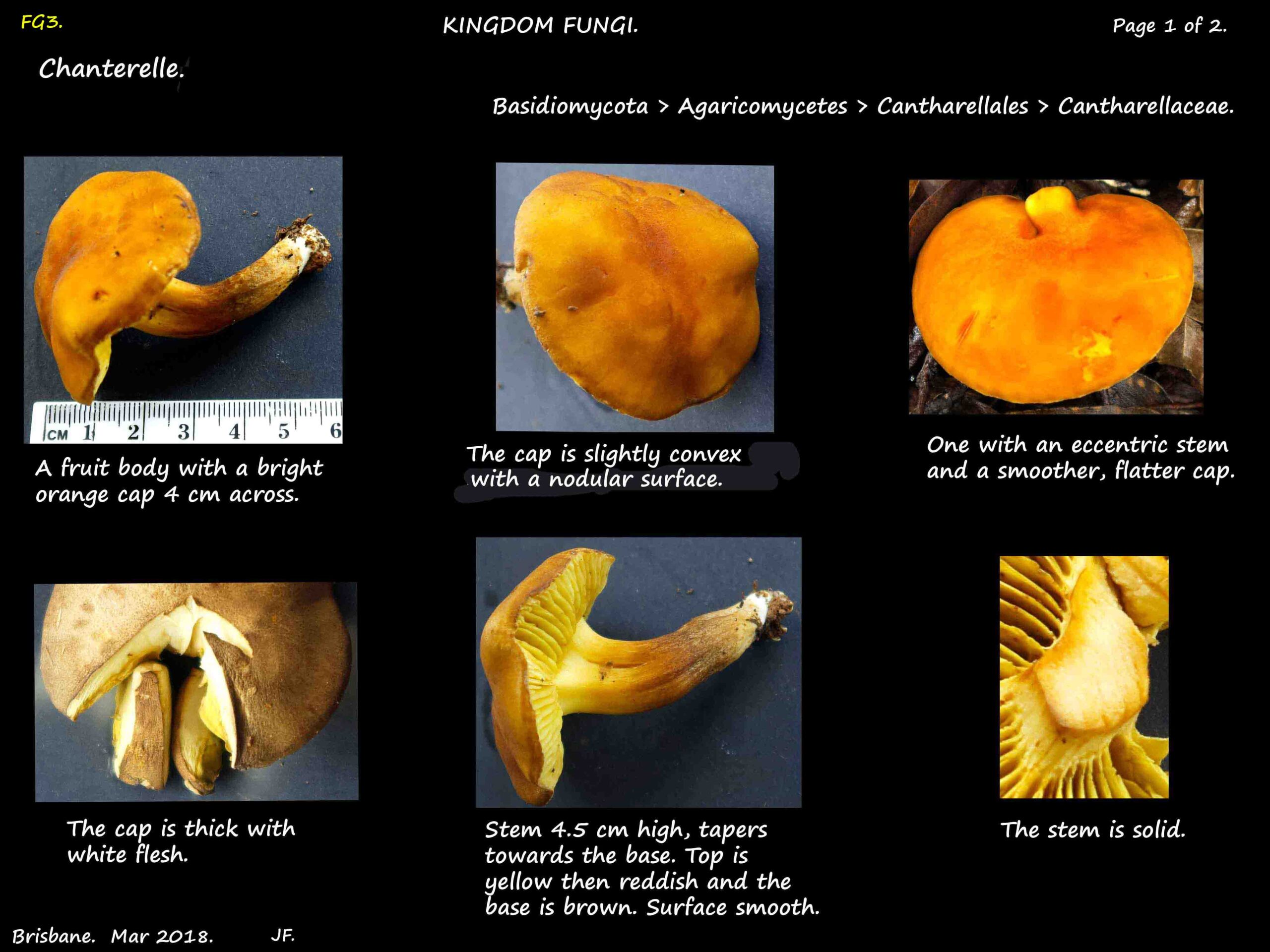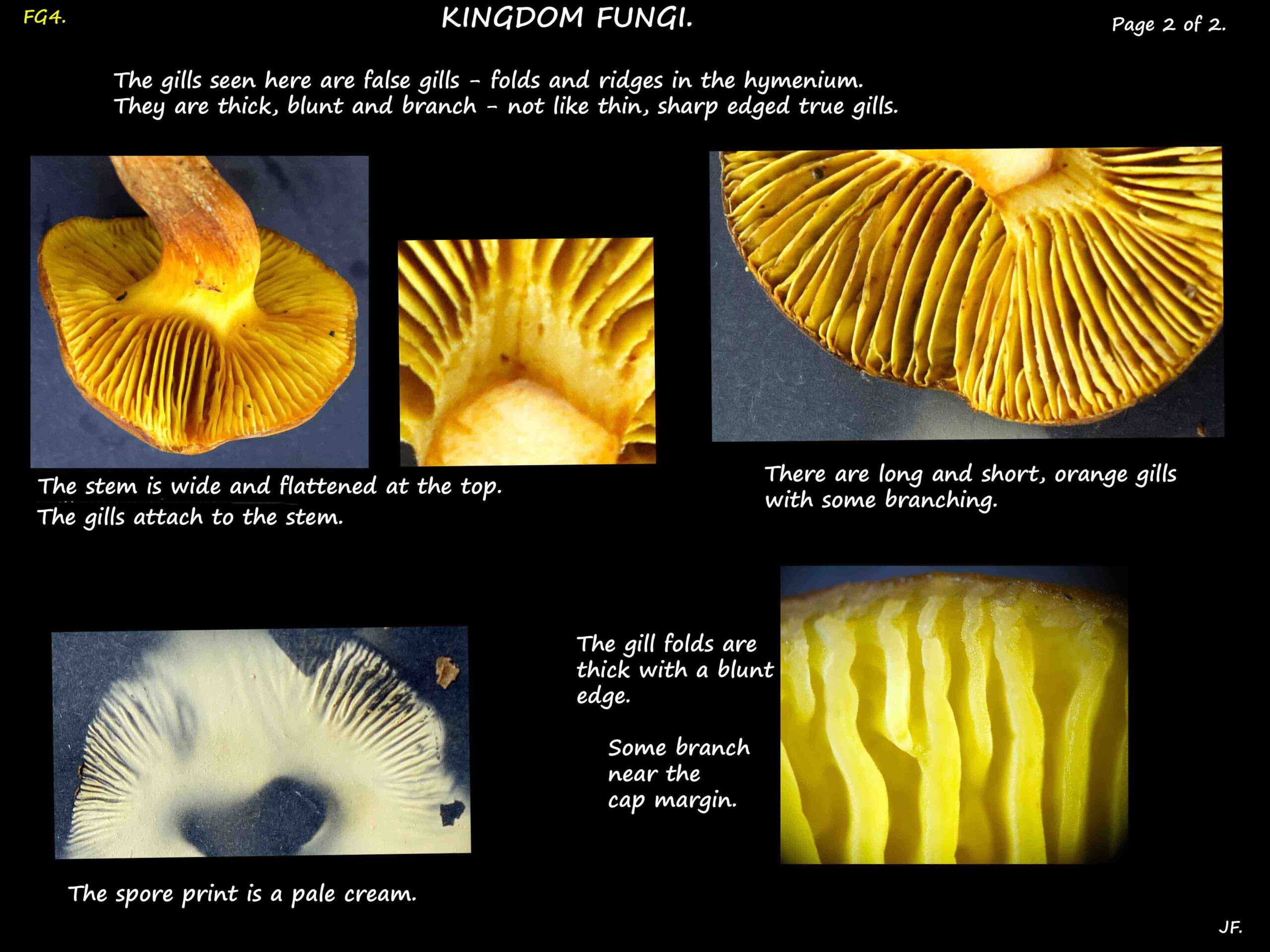Mushrooms with false gills.
Cantharellales.
Basidiomycota > Agaricomycetes > Cantharellales.
The order contains 7 families with about 38 genera and 544 species.
They demonstrate a variety of fruit body forms – the chanterelles (Cantharellaceae), club and coral fungi
(Aphelariaceae and Clavulinaceae), tooth fungi ((Hydnaceae), corticioid fungi (Botryobasidiaceae);
plus Ceratobasidiaceae and Tulasnellaceae.
Cantharellaceae.
Cantharellus and Craterellus are widespread and probably the best known genera.
They are found on the ground or in leaf litter, scattered or in groups.
The fleshy fruit bodies are mushroom-like with a cap and stalk, or funnel-shaped.
The spore bearing surface (hymenium) is under the cap or on the outside of the funnel shaped ones and typically
runs down onto the stem.
The hymenium may be smooth, veined, slightly wrinkled or have the appearance of gills with gradations between all these.
The gills are false gills – thick folds in the surface that are forked.
They cannot be separated from the cap without causing damage – true gills can.
The stem may be central or to the side.
It is solid in the chanterelles and hollow in the trumpets.
Identifying a mushroom as a chanterelle or trumpet is usually easy although some are similar.
Distinguishing the species is more difficult, especially as to the shade of yellow and orange.
Cantharellus & Craterellus.
Cantharellus.
Chanterelles are usually solitary or in small groups and always near trees.
Fruit bodies are initially convex with an inrolled edge then flatten slightly.
The cap is smooth and up to 15 cm across.
They are a uniform light to orange-yellow due to their carotene content.
The flesh is yellow or white.
The fruit body lasts 2 to 3 weeks.
The spore bearing layer is the same colour as the cap and runs down onto the stem.
It consists of false gills – thick folds or ridges which fork or branch and may be wavy.
The layer does not easily separate from the cap.
Spore print is from whitish to slightly yellow.
The solid stem is up to 10 cm high.
It’s length is similar to the width of the cap, the same colour or slightly paler.
It may taper from top to bottom and (below the hymenium) is smooth with no ring.
Craterellus.
The Trumpets or Black Trumpets have fruit bodies that are funnel shaped.
The depth of the funnel is variable – from a small depression to a deep hole.
The cap colour varies e.g. black, brown or a bright orange.
The margin may become wavy or irregular with age.
The hymenium may be smooth, slightly wrinkled or have false, forked gills.
It is brown, yellow or orange and runs down onto the stem.
The brown or orange stem is hollow and the surface is smooth.
The spore print is cream to salmon.
J.F.



